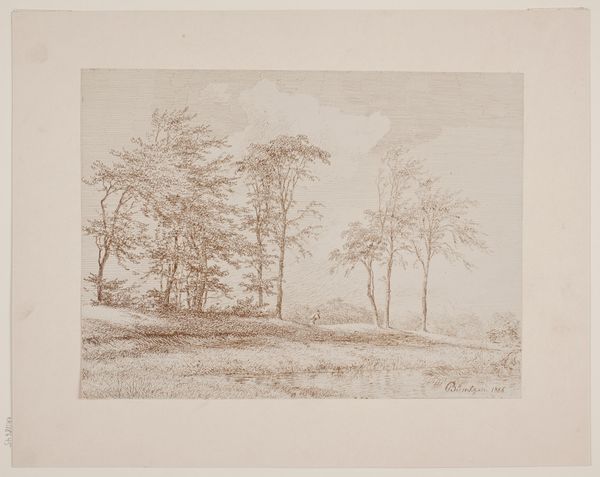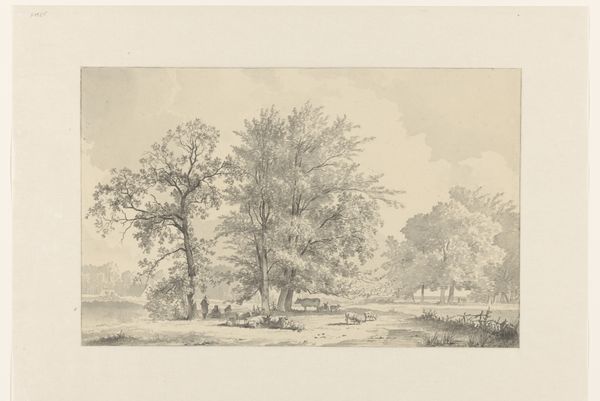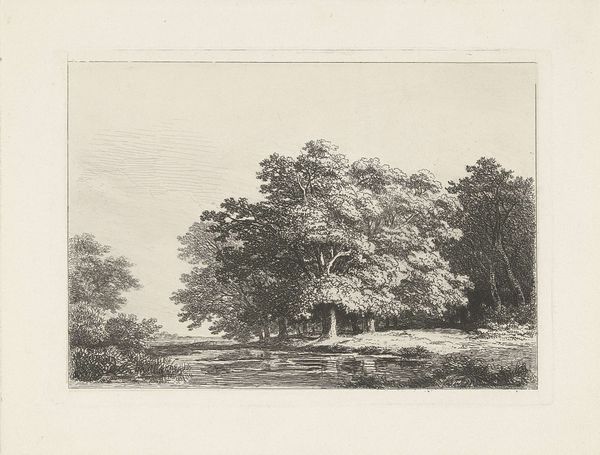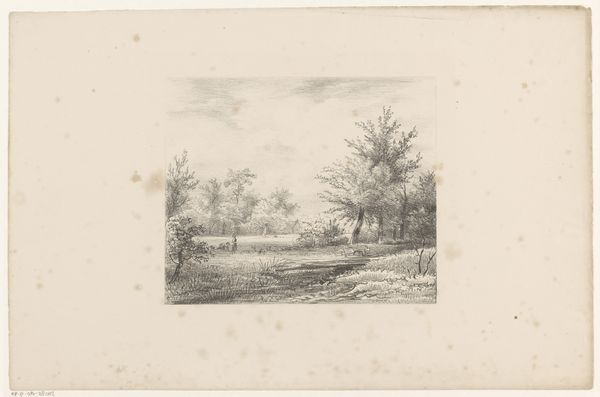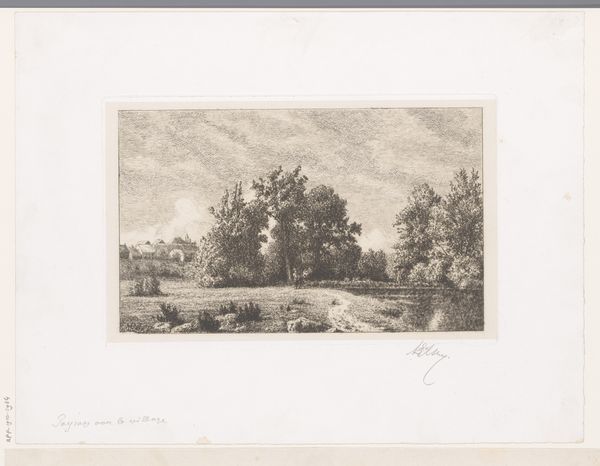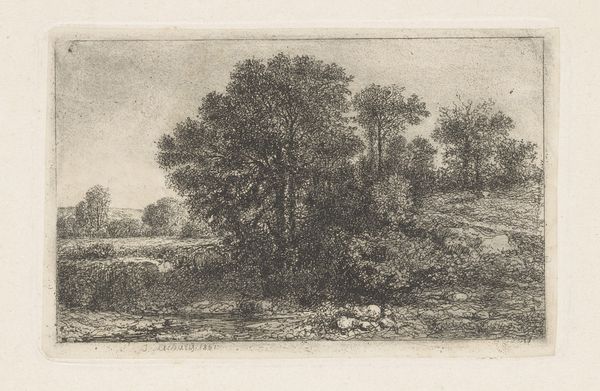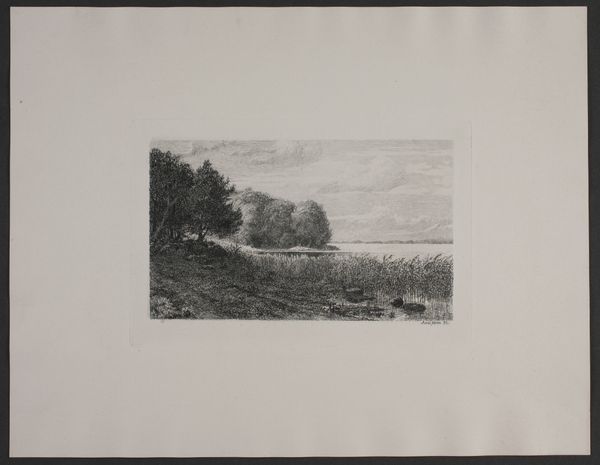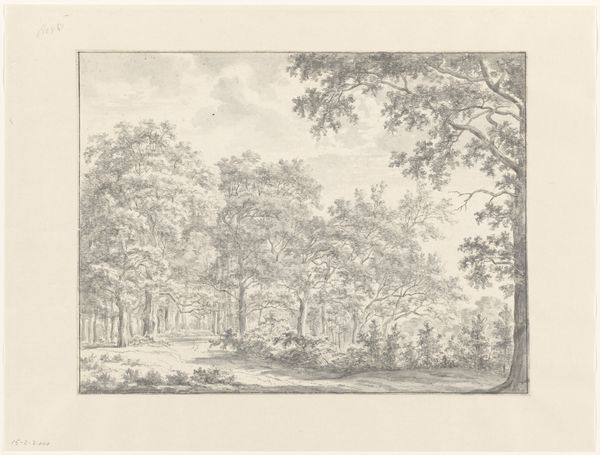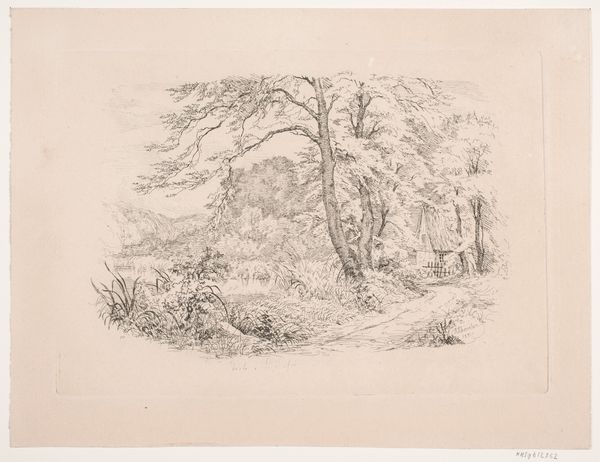
drawing, print, etching, paper, ink
#
drawing
#
dutch-golden-age
# print
#
etching
#
landscape
#
paper
#
ink
#
forest
#
realism
Dimensions: height 222 mm, width 317 mm
Copyright: Rijks Museum: Open Domain
Editor: Standing before "Landscape with Three Trees on the Right" by Jan Lievens, dating back to the 1650s or 60s. It's an etching in ink on paper and I find the rendering incredibly detailed. How should we understand it? Curator: What stands out to me immediately is the medium: etching. The reproducible nature of printmaking inherently democratizes art, moving it away from singular, precious objects. It begs the question: Who was intended to consume this landscape and how might they have interacted with it? Was it intended as a preparatory study, for example, before creating larger paintings on the patrons' order? Editor: That’s a point, but, given the detail, wouldn't a drawing have been easier if only for reference purposes? Curator: Perhaps, but the etching process itself allows for a certain precision and replicability of line that pen and ink might not achieve. Think about the chemical process involved—acid biting into the metal plate—and the physical labor of creating the matrix from which these images were pulled. These things weren't just spontaneous renderings but rather artifacts of material processes and choices. How does understanding this piece as part of a wider print market change its perceived value? What does its distribution reveal about access to landscape imagery during the Dutch Golden Age? Editor: That's a perspective shift. I was initially focused on Lievens' skill. Now, considering its role in the print market expands its impact beyond aesthetic enjoyment. It emphasizes a world where art became more readily available, impacting viewers from many societal levels, as products. Thanks for illuminating this other dimension! Curator: Exactly! We must not simply focus on the 'art' in and of itself, but consider instead its genesis through specific material and labor, how such pieces circulate and how these movements influence reception.
Comments
No comments
Be the first to comment and join the conversation on the ultimate creative platform.


